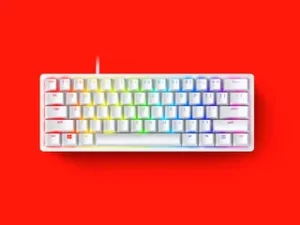Raspberry Pi 5: What’s Next for This Amazing Device?

Earlier this year, the Raspberry Pi Foundation launched five new devices in just 12 months, including the Pi Zero W, which was just announced at CES 2018. The foundation has now sold over 10 million devices, but what’s next? Here’s our take on the best Raspberry Pi 5 features that we expect to see in 2018 and beyond.
3 Things You Need to Know About the New Model
The new Raspberry Pi 5 is faster, more powerful, and easier to use than ever before. Here are three things you need to know about the new model -The new device uses a quad-core processor instead of a single-core one, which will make it even better at multitasking
- It also has Wi-Fi built in which will allow you to connect without needing an Ethernet cable or USB adapter
- A handy button on the back allows easy configuration of your SD card so that you can get started right away
- USB ports were added to provide extra power for external devices such as Bluetooth dongles or WiFi adapters
New Capabilities
The Raspberry Pi 5 is an amazing device that has been used for everything from powering space probes to building robots. Here are some of the new capabilities that the Raspberry Pi 5 has:
- The ability to connect to a network using WiFi or Bluetooth.
- A faster processor that can handle more complex tasks.
- More memory, which means more programs can be run at the same time.
- A better graphics processor, which will allow for smoother video and better gaming performance.
- An increased number of USB ports, meaning you’ll be able to attach more devices and peripherals like keyboards, mice, etc.
The best uses
The Raspberry Pi is a amazing device that can be used for a variety of different purposes. Here are five of the best uses for the Raspberry Pi and why they’re so great. The first one is using it as an inexpensive computer. You just need to purchase an SD card with Raspbian, plug in a keyboard, mouse, and display, and you’re good to go!
The second use for the Raspberry Pi is as a media center (or Kodi box). It only takes about 10 minutes to set up this device on your TV and start streaming movies!
Next up is using it as an audio player. You can store music files or podcasts on the microSD card, plug headphones into the headphone jack, or attach speakers to the 3.5mm port and start listening! Last but not least is using it as a retro gaming console. All you have to do is get RetroPie setup and you’ll have access to all your favorite old-school games from back in the day when video games were less complicated than they are now.
How do I get one?
The Raspberry Pi is a credit card-sized computer that plugs into your TV and a keyboard. It’s a capable little PC which can be used for many of the things that your desktop PC does, like spreadsheets, word-processing and games. It also plays high-definition video. We offer a comprehensive range of accessories for all types of maker projects. As such, we’re excited to announce that there will be five new devices launching this year – with each device serving a specific need! Stay tuned!
If you are interested in purchasing one of these fantastic new machines, keep an eye on our website or register your interest below – once they launch, we’ll let you know when they’re available for pre-order. While you’re here though, why not check out our other fantastic Raspberry Pi products as well? They make brilliant gifts – especially given their pocket-money price tag! We’ve got them from under £10 up to £500 so there really is something for everyone! You might want to get started by browsing through some of our categories: Computers & Accessories, Media & Entertainment, Hardware Components and Prototyping Kits.
Is this for me?
The Raspberry Pi is a series of small single-board computers developed in the United Kingdom by the Raspberry Pi Foundation to promote teaching of basic computer science in schools and developing countries. The original model became far more popular than anticipated, selling outside its target market for uses such as robotics. It does not include peripherals (such as keyboards and mice) or cases.
However, some accessories have been included in several official and unofficial bundles. For example, an HDMI cable was bundled with the first-generation Raspberry Pi; early models had an SD card slot on board but later models use microSD cards. Case kits are available from various manufacturers, but are only intended to protect the circuit board from ESD damage.







